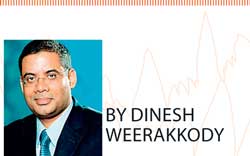Reply To:
Name - Reply Comment

Given the current political and economic challenges facing Sri Lanka, our political leaders who are committed to economic and social development, need to work in collaboration with the industry and labour stakeholders to get the best out of our natural assets, relatively educated workforce and trade location. This shared commitment, will certainly help them to build the economic structure and workforce we need for Sri Lanka’s future economicsuccess.
The government, labour and industry bring key expertise to the table.Therefore, they need to work together to deliver sustained economic growth: for example:
1.Government’s role: set policy, establish regulation, act as a role model, target investment in infrastructure, facilitate business
2.Labour: ensure competence and commitment of workforce and ensure they continually learn and upgrade their skills
3.Industry: create global competitiveness and leverage organisation successes to create new opportunities for the country
Lack of a common agenda
However, these three groups have different agendas and aspirations, but they need to share a common agenda for building Sri Lanka’s economic future. Creating this cooperation among these groups may come from:
1.Establish councils (e.g., council of economic advisors, foreign policy advisory councilor council of education thought leaders) which monitor particular areas of the economy
2.Joint task forces across the three groups targeting specific issues, problems or questions that might arise (e.g., free trade arrangements)
3.Cooperation ventures across the groups, e.g., industry internships for education opportunities and to build public service capacity
4.Find common ground with simple pilots and successes, e.g., an industry -targeted business school where government, industry and education work together to grow the future workforce
5.Education and skills councilsto develop curriculum, talent, reorient training infrastructure and build future knowledge workers
Expectation
The current government’s strategy is to build a strong, stable and sustainable economy by 2020. If the expectations are met, our debt to gross domestic product (GDP) level would be down to about 50 percent; the GDP would be over US$ 120 billion; the per capita income would be above US$ 6,000; inflation would be at the lower range of the single digits; tax-to-GDP ratio would improve; economic growth would be at around an average of 8 percent;
Poverty would be less than 4 percent; unemployment would be at around 3 percent; foreign direct investment (FDI) to GDP would be in line with other middle income countries, our real foreign reserves would pass US$ 15 billion; the Sri Lankan rupee would have found its real value; our productivity levels would have improved sharply and people would be working smarter and contributing more;
Sri Lanka would be in the first 50 countries in the Ease of Doing Business ranking; the country’s credit rating would be at an investment grade; the disparities that are now being seen in certain remote districts would have reduced considerably; our people would be enjoying a much higher standard of living in all districts; tourism and technology and service sectors the new drivers of the economy, would be contributing significantly towards the growth of the economy;
Our infrastructure would have significantly improved and probably close to what is currently prevalent in Malaysia; our ports and airports would be popular worldwide; our people would be having skills in many fields; many Sri Lankan conglomerates would have expanded regionally and have global presence; and finally the Colombo skyline would have undergone a major change with the proposed megapolis.
All these outcomes would of course be contingent upon strong political leadership being provided to the economy and the country and consistent policies so that the key stakeholders could take a long-term view in their economic activities and decision-making. Therefore, it is important for the tripartite partners to cohabit, to ensure the major economic transformation envisioned could be fully realized to grow our economy at 8 percent to benefit all Sri Lankans, especially for the bottom 40percent.
(Dinesh Weerakkody is a senior company director)